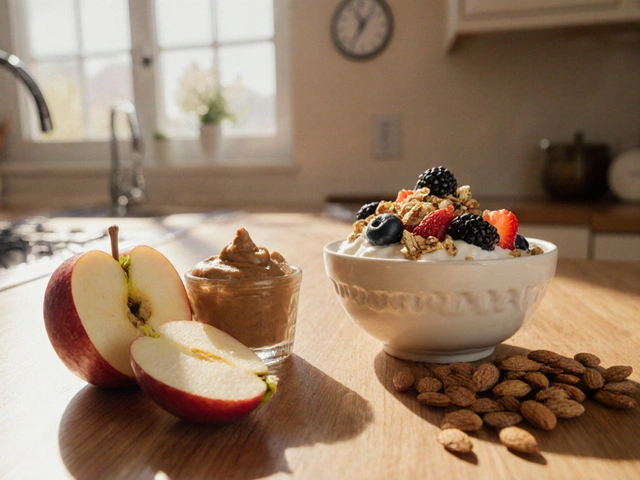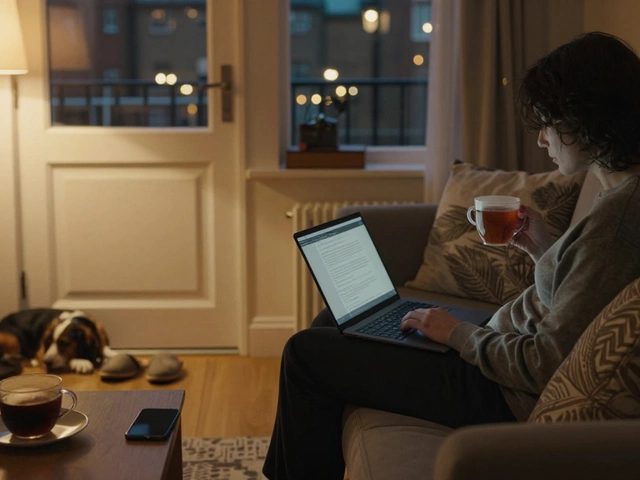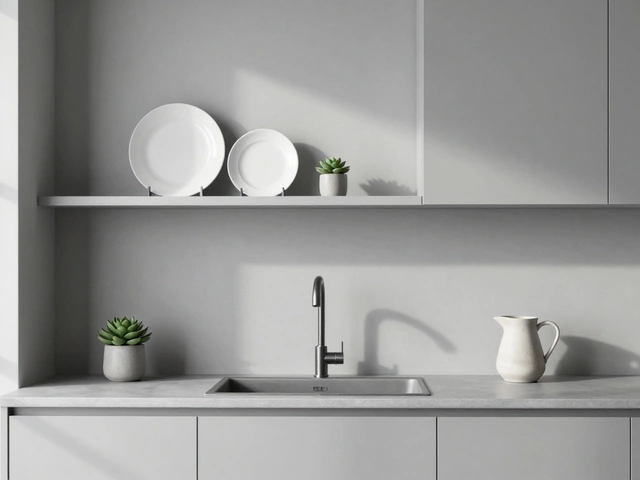“Work-life balance” can sound like something only super-organized people have, right? But it’s less about fancy schedules and more about figuring out what actually recharges you—and making it part of your routine. Too much screen time, skipping meals, feeling guilty about downtime? That’s pretty much the modern experience. And that’s why real, realistic tips matter so much.
Let’s get practical: one size doesn’t fit all here. You don’t have to adopt every new wellness trend or sign up for expensive classes. In fact, people who make small, consistent changes—like setting a real quitting time or moving during their lunch break—see big results by the end of a year. You want less stress and more energy, not a new chore list, right?
This is about finding easy changes you can make today, not next month. And yes, you can actually enjoy your downtime, eat decent food, and move your body—even if your to-do list is endless. It’s about building habits that feel doable, not overwhelming. Ready to see what actually works?
- Setting Boundaries at Work and Home
- Moving Your Body (Without Hating It)
- Eating for Energy, Not Stress
- Building Routines That Stick
Setting Boundaries at Work and Home
People always talk about work-life balance, but what does that actually look like day-to-day? It pretty much starts and ends with boundaries—knowing when to say “no,” turning off notifications, and making real space for your personal life. It’s not selfish, it’s what keeps you sane and healthy.
Here’s the thing: research from Gallup shows that employees with clear work boundaries are 30% more likely to report good wellness and less burnout. If you’ve got Slack pinging at dinner or you’re checking emails before bed, that’s a red flag for chronic stress. The solution isn’t just about shutting your laptop—it’s about making it a habit.
- Set a finish time for work. Pick a time and stick to it, even if you have to put a post-it on your screen. Try not to check work stuff after hours unless it’s a real emergency.
- Communicate clearly. Tell your boss or team when you’ll be “offline.” Most people are more understanding than you think.
- Carve out no-work zones. Maybe your bedroom or kitchen is off-limits for laptops and phones. You’ll feel an instant boost when you physically separate work and downtime.
- Use tech to help. Silent mode, do-not-disturb, even scheduling apps can put up digital barriers for you.
And don’t forget about personal life boundaries—yes, your family and friends need to respect your “work time” too. If you’re always the person picking up extra chores because you work from home, practice saying no. You’re allowed to protect your focus just like you protect your free time.
| Habit | Result in 1 Month |
|---|---|
| No emails after 7pm | 43% slept better, according to a 2023 survey of remote workers |
| Dedicated lunch breaks | Reported 25% higher afternoon energy levels |
These changes might look small, but they add up fast. With real boundaries, you don’t just have more time—you get higher quality rest and actually enjoy your non-work hours. That’s what a healthy lifestyle really looks like.
Moving Your Body (Without Hating It)
Moving more isn’t about sweating buckets in the gym every day—unless that actually excites you (spoiler: for most people, it doesn’t). Small, regular chunks of movement count for more than the occasional all-out effort. One study from the American Heart Association found that even walks as short as ten minutes can improve mood and reduce stress. The key is to pick something you don’t dread.
- Skip the gym guilt. Walk during phone calls or meetings. Take that stairwell instead of the elevator when you can. Got kids or a dog? They’re an excuse to move, too.
- If your work means long hours at a desk, set a reminder or use a standing desk. Even standing burns more calories and helps your brain reset.
- Dancing in your kitchen, stretching in your pajamas, or playing with pets totally counts. You don’t need a routine to move; just make sure you’re not sitting for hours without a break.
Here’s what’s wild: according to a 2023 study published in JAMA Internal Medicine, people who got up and moved for 3-5 minutes every half hour had lower blood sugar and less fatigue than those glued to their screens all day. That’s just a couple of songs on your playlist.
The trick is to turn movement into something automatic—like brushing your teeth. Sticky notes, phone alarms, fitness trackers—whatever gives you a nudge is fair game. And if exercise makes you anxious or bored, swap ‘working out’ with something you enjoy. Shoot hoops, walk with a neighbor, try yoga off YouTube. No need for fancy gear.
| Activity | Calories Burned (30 min)* |
|---|---|
| Brisk Walking | 150 |
| Light Housework | 80 |
| Dancing | 130 |
| Playing with Kids | 120 |
*Based on a 155-pound adult, for reference
Remember, the biggest change comes from showing up—even for five minutes. Healthy lifestyle routines build over time, and movement should feel more like a treat, less like a punishment. It’s about feeling better today, not getting six-pack abs by next weekend.

Eating for Energy, Not Stress
When life gets busy, grabbing whatever’s handy can become the default. But if you want real work-life balance, food can actually make or break your whole day. Fast food, sugar rushes, and caffeine overloads might feel like quick fixes, but they throw your energy on a rollercoaster and make stress even worse.
Here’s what actually works: fueling your body with meals and snacks that keep you steady, not spiking and crashing. Experts say pairing carbs with protein (like an apple with a handful of almonds) keeps blood sugar stable, helping you focus at work and not hit a wall mid-afternoon. Drinking enough water (yes, it matters) cuts brain fog and prevents that tired-sluggish feeling people mistake for pressure or burnout.
- Eat Protein with Each Meal: Try eggs at breakfast, chicken or tofu at lunch, or beans in your salad. Protein slows how fast sugar enters your bloodstream, so energy lasts longer.
- Don’t Skip Meals: Skipping breakfast or lunch just sets you up to overeat later, and you’ll feel cranky at the worst moments. Quick tip: keeping healthy snacks at your desk actually helps you avoid emergency vending machine visits.
- Watch Out for Stress Eating: Stress can make us reach for salty chips or sweets, but this just kicks off a guilt spiral. It’s okay to have treats, but putting fruit, nuts, or yogurt somewhere easy to grab makes the healthy choice automatic.
- Plan Ahead: Meal prepping doesn’t have to be a huge Sunday operation. Even chopping extra veggies the night before or keeping canned tuna to throw in a salad really helps when things get hectic.
Interesting fact: According to a 2023 workplace health survey, employees who ate a balanced lunch reported 31% higher afternoon productivity compared to those who skipped or had only snacks.
| Food Swap | Better Energy Option |
|---|---|
| Sugary granola bars | Greek yogurt + berries |
| Chips | Air-popped popcorn or roasted chickpeas |
| Soda | Iced herbal tea or water with citrus |
Sticking with these small wins pays off. When your meals are steady, your energy and mood follow—so instead of food making life harder, it can actually make work-life balance feel real.
Building Routines That Stick
If you’ve ever started a new habit and then totally dropped it two weeks later, you’re not alone. Sticking with a healthy lifestyle is less about willpower and more about making things so easy that you can’t say no. Research from the University College London found it takes an average of 66 days for a new habit to become automatic. But don’t stress about forgetting a day—what matters is getting back on track, not perfection.
The secret? Lower the bar. Instead of planning a whole hour-long workout, commit to five or ten minutes. Cutting habits into bite-sized pieces makes them less intimidating and much easier to repeat. Anchor new routines onto old ones. For example, after you brush your teeth at night, do two minutes of stretching, or prep your work bag right after dinner. This “habit-stacking” trick really helps routines stick around.
- Set reminders on your phone. Even the most motivated people forget things without a nudge.
- Track your progress somewhere visible—apps, paper charts, or sticky notes work wonders for reinforcing new habits.
- Be honest about what’s actually doable. If you work late, maybe meal prep means chopping veggies, not full recipes.
- Give yourself a quick reward (think a cup of tea or a favorite playlist) once you finish a healthy task. Rewards make routines feel less like chores.
Let’s get real: routines won’t always go perfectly, especially if you’re balancing work and home. According to a 2023 survey by the American Psychological Association, people who kept their routines flexible reported less stress and better sleep. A little wiggle room helps you bounce back, instead of giving up after one off day.
| Tip | Easy Starting Point |
|---|---|
| Move your body daily | Walk during lunch break, stretch while watching TV |
| Eat for energy | Pack a snack so you don’t hit the vending machine |
| Set work boundaries | Turn off notifications after a set time |
| Track habits | Mark an X on the calendar each day you stick to your plan |
When things feel overwhelming, pick just one tiny change and make it your focus. That’s how routines turn into real life changes.










